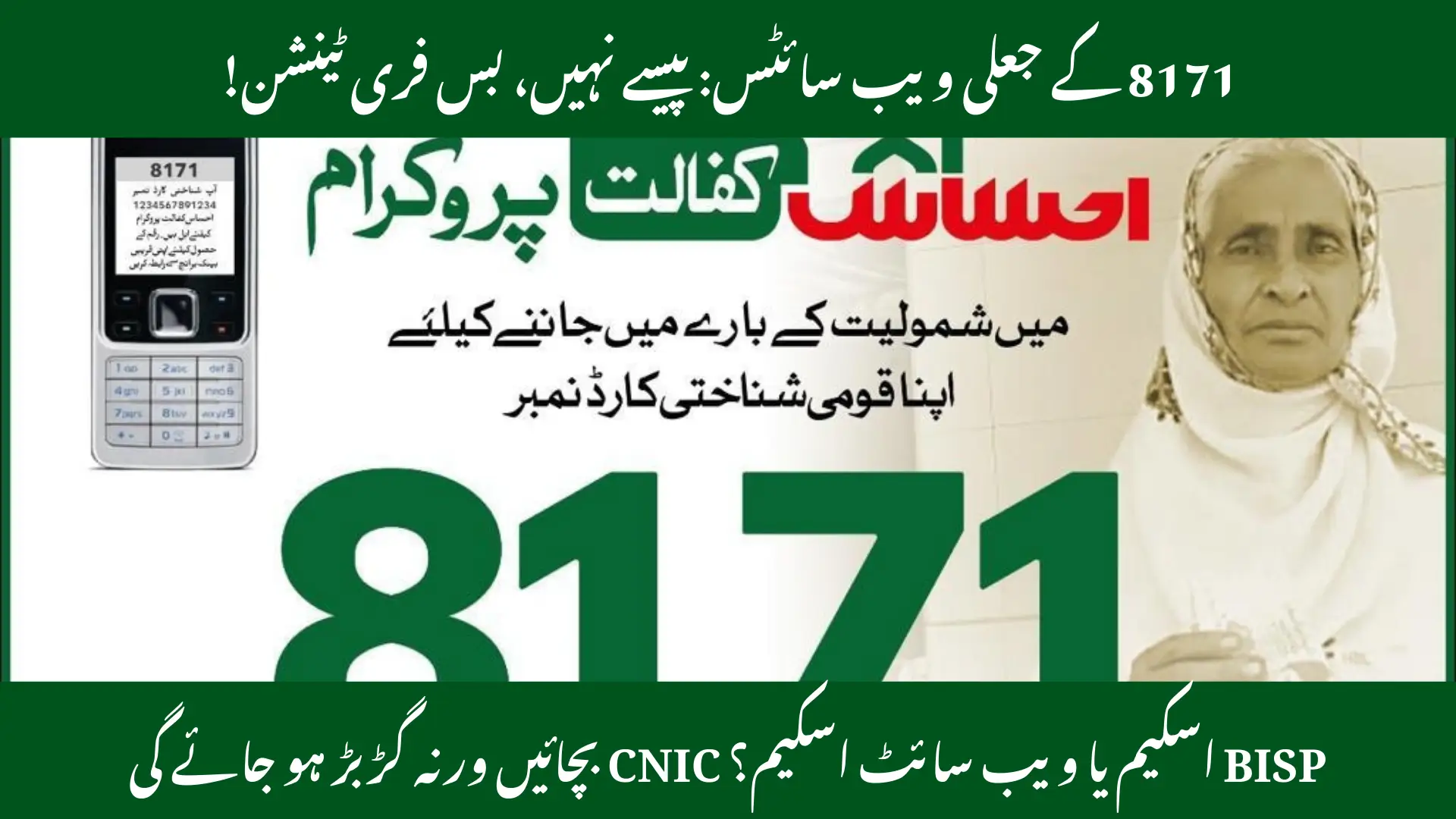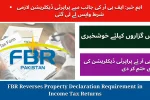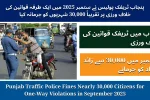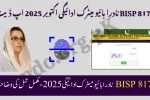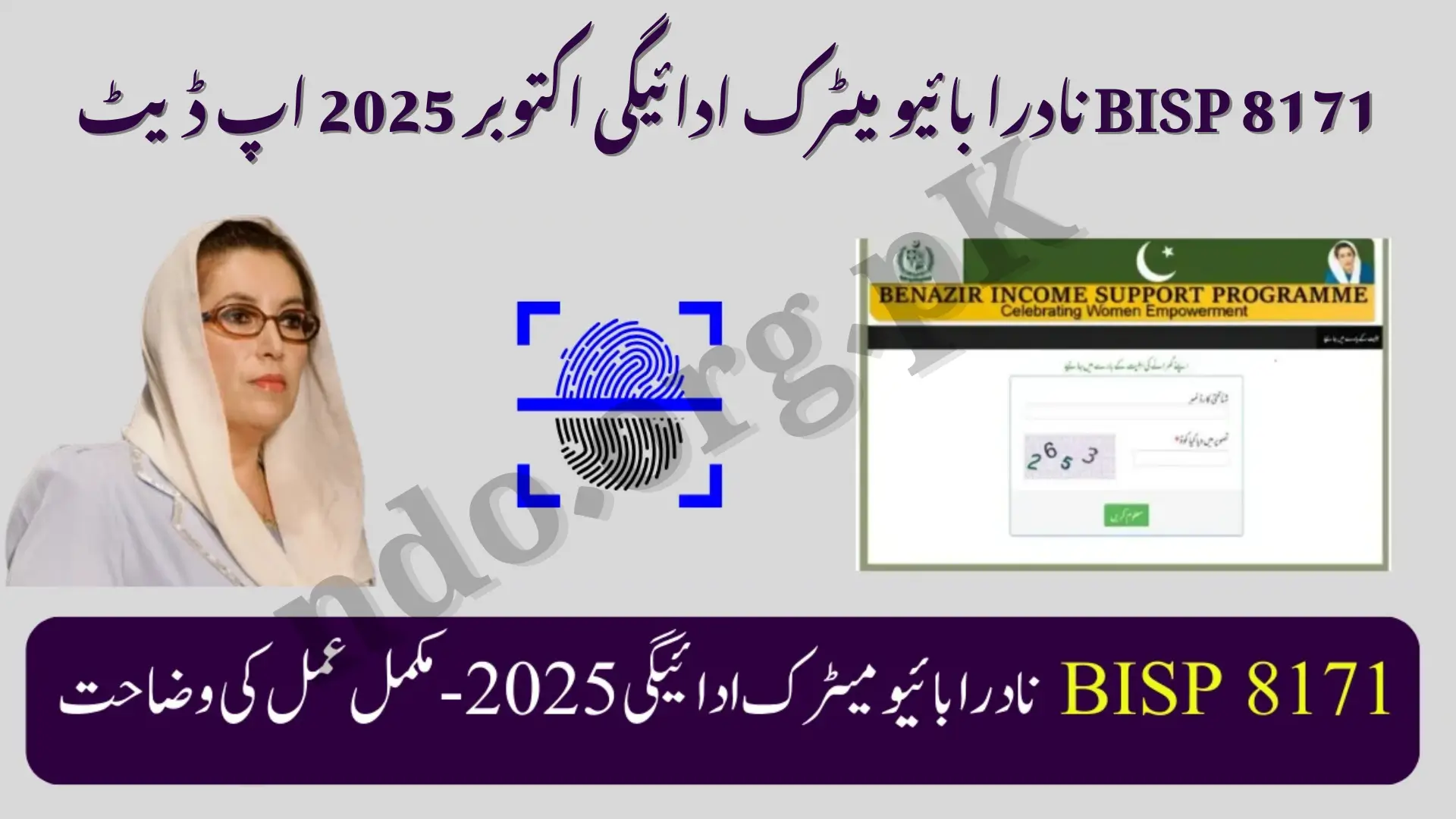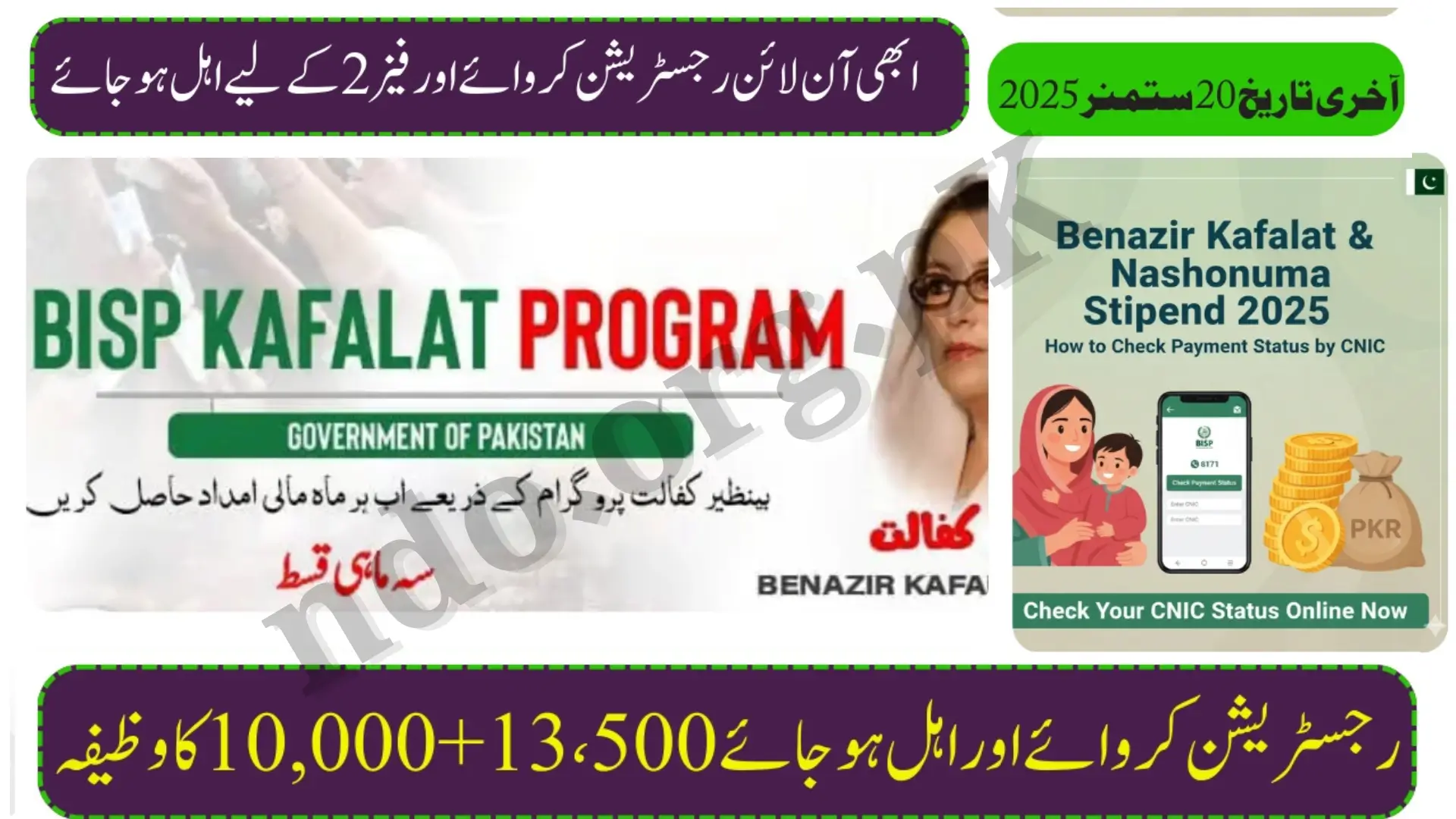Thousands of beneficiaries across Pakistan rely on the Benazir Income Support Programme (BISP 8171) to check eligibility and receive financial assistance. This program has become a lifeline for many families, helping them access payments via CNIC verification through SMS or the online portal.
However, in September 2025, reports have surfaced about fake BISP 8171 CNIC check websites. These fraudulent platforms are designed to steal your personal information, CNIC numbers, and payment details. They often look similar to the official BISP portal, making it difficult for beneficiaries to identify scams.
If you are a BISP beneficiary, it is extremely important to distinguish between real and fake websites. Using unofficial links can expose your CNIC, personal details, and financial information to scammers. This article will guide you on how to safely check your BISP 8171 eligibility, spot fake websites, and protect your data in 2025.
Official Ways to Check BISP 8171 Eligibility
BISP provides multiple official channels for beneficiaries to verify their eligibility and check their payment status. Using only these methods ensures your CNIC data remains safe.
| Method | How It Works | Safe Link / Number |
|---|---|---|
| SMS Method | Send your CNIC number to 8171 | Official PTA-verified shortcode 8171 |
| Online Portal | Visit the official website to check your eligibility status | 8171.bisp.gov.pk |
| BISP Tehsil Office | Manual verification with your CNIC | Visit the nearest BISP center |
- Sending your CNIC to 8171 via SMS is fast, secure, and verified by PTA.
- The official online portal is 8171.bisp.gov.pk. No other domain is legitimate.
- Manual verification at BISP tehsil offices is always available for beneficiaries who prefer in-person checks.
Signs of Fake BISP 8171 Websites
Fake websites often mimic the official BISP portal but include subtle clues that indicate they are fraudulent. Watch out for these signs:
- Domain Names Other Than 8171.bisp.gov.pk
- Scammers create websites with similar-looking names, such as
bisp-8171.comor8171bisp.org. - Always verify the official domain before entering CNIC details.
- Scammers create websites with similar-looking names, such as
- Asking for Extra Details
- Fake sites may request bank account information, passwords, or card numbers.
- Official BISP verification only requires your CNIC number.
- Pop-up Ads Claiming “Instant Cash” Rewards
- Beware of pop-ups or banners promising extra money or bonuses for registration.
- BISP never provides cash rewards through unofficial websites.
- Suspicious WhatsApp / Telegram Links
- Many scam links are shared in social media groups claiming they can check eligibility.
- Avoid clicking any WhatsApp or Telegram links for BISP CNIC checks.
- Poor Design, Spelling Mistakes, or Unofficial Logos
- Official BISP portals have a clean, professional layout.
- Sites with spelling errors, blurry logos, or unprofessional design are usually scams.
Why These Scams Are Dangerous
Falling for fake BISP 8171 websites can lead to serious consequences for beneficiaries. Understanding the risks helps you stay alert.
1. Identity Theft
- Your CNIC and personal information can be stolen and misused for fraudulent activities.
- Scammers can create fake accounts or even commit financial fraud in your name.
2. Financial Fraud
- Fake websites may ask you to provide bank details or make small payments to “confirm eligibility.”
- This is a classic method to steal money from vulnerable beneficiaries.
3. Payment Delays
- Information submitted to fake portals is not updated in the official BISP system.
- You may miss your payments if your CNIC is used on fraudulent sites.
4. Psychological Stress
- Beneficiaries often feel confused or anxious after losing data to scammers.
- Trust in official support channels may decrease, affecting timely access to aid.
How to Stay Safe as a Beneficiary
Protecting your CNIC and personal data is essential. Follow these simple steps to stay safe while checking BISP 8171 eligibility:
- Use Only Official Channel: Send CNIC via SMS to 8171. Visit the official portal 8171.bisp.gov.pk.
- Avoid Sharing CNIC Screenshots: Never post CNIC numbers on social media groups or WhatsApp chats.
- Report Suspicious Websites: If you find a fake website, report it to the FIA Cyber Crime Wing immediately.
- Bookmark Official Portals: Save 8171.bisp.gov.pk in your browser for quick, secure access.
- Verify News from Official Pages: Check updates only from BISP official social media accounts and avoid forwarded messages.
How to Check BISP 8171 Balance Online by CNIC in 2025
Checking your BISP 8171 balance and eligibility is easy and safe using official methods:
Method 1: SMS
- Open your phone’s SMS app.
- Type your CNIC number without dashes.
- Send the message to 8171.
- Receive a confirmation SMS showing your eligibility and payment status.
Method 2: Official Online Portal
- Visit 8171.bisp.gov.pk.
- Enter your CNIC number in the provided field.
- Complete any security captcha if prompted.
- Click Check Eligibility.
- View your payment status and balance instantly.
Method 3: BISP Tehsil Office
- Locate the nearest BISP office in your area.
- Provide your original CNIC.
- Staff will check your eligibility and payment status manually.
Tip: The SMS method is the fastest and does not require internet access.
Examples of Fake Website Practices
To help beneficiaries identify scams, here are common tricks used by fake BISP 8171 websites:
- Websites asking for CNIC + bank account + mobile number.
- Pop-ups saying “You won a cash prize, enter your CNIC.”
- Redirection to WhatsApp or Telegram channels claiming instant eligibility.
- Poorly written content with spelling mistakes and unofficial logos.
- Use of unofficial domain names like
.com,.net, or.orginstead of.gov.pk.
Important Tips to Avoid BISP Scams
- Always double-check the domain name.
- Do not click on links from WhatsApp, Facebook, or email forwards.
- Avoid sharing your CNIC or banking details online.
- Keep your phone updated to block scam SMS messages.
- Report suspicious activity to the FIA Cyber Crime Wing.
Conclusion
In September 2025, multiple fake BISP 8171 CNIC check websites were exposed. These fraudulent platforms put millions of beneficiaries at risk of identity theft, financial loss, and payment delays.

